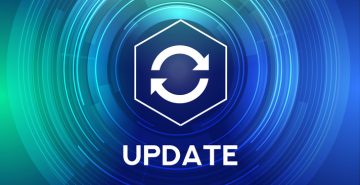Effective IT monitoring is crucial for ensuring the reliability and performance of an organization’s IT systems. By tracking and analyzing key systems and components, IT professionals can identify and resolve issues before they become major disruptions, helping to minimize downtime and maintain the smooth operation of business-critical systems. Here are four key steps to implementing an effective IT monitoring process:
But first, let’s understand what is IT monitoring
What is IT monitoring?
IT monitoring is the systematic tracking and analysis of an organization’s IT systems and infrastructure in order to identify and resolve issues in a timely manner. It involves the use of tools and processes to collect data about the performance and availability of IT systems, which can then be analyzed to identify trends, patterns, and potential issues.
IT monitoring can involve monitoring a wide range of systems and components, including servers, databases, networks, applications, and other IT assets. It is typically carried out by IT professionals, who are responsible for setting up and maintaining the monitoring tools and processes, collecting and analyzing data, and responding to and resolving any issues that are identified.
4 Steps of IT Monitoring
Below are the four steps for It Monitoring
- Identity what needs to be monitored:
The first step in IT monitoring is to determine what systems and components need to be monitored. This may include servers, databases, networks, applications, and other IT assets. It’s important to be thorough in this step, as it will help ensure that all critical systems are being monitored and that no important issues are missed. - Set up monitoring tools and processes:
Once you have identified what needs to be monitored, the next step is to set up monitoring tools and processes to track the performance and availability of these systems. This may involve installing software agents on servers, setting up monitoring dashboards, and establishing alerting and notification systems. It’s important to choose monitoring tools and processes that are reliable, scalable, and suitable for your organization’s needs. For example, if you have a large and complex IT infrastructure, you may need more advanced monitoring tools and processes to effectively track and analyze all of your systems. - Collect and analyze data:
The monitoring tools and processes should be configured to collect and store data about the performance and availability of the systems being monitored. This data can then be analyzed to identify trends, patterns, and potential issues. By regularly reviewing this data, IT professionals can stay on top of any potential issues and proactively address them before they become major problems. - Respond to and resolve issues:
When an issue is identified through IT monitoring, it should be promptly addressed in order to minimize any disruptions to the organization’s IT systems. This may involve troubleshooting and fixing the issue, as well as implementing preventative measures to reduce the likelihood of similar issues occurring in the future. Quick and effective issue resolution is essential to minimizing downtime and maintaining the reliability of your organization’s IT systems.Effective IT monitoring requires careful planning, attention to detail, and the use of reliable tools and processes. It’s also important to have a clear plan in place for responding to and resolving issues that are identified through monitoring. By following these four steps, organizations can ensure that their IT systems are running smoothly and efficiently, minimizing downtime and disruptions to their business operations.
In addition to the four steps outlined above, it’s also important to periodically review and update your IT monitoring process to ensure that it is meeting the changing needs of your organization. As your IT infrastructure evolves, you may need to adjust your monitoring tools and processes to ensure that you are effectively tracking and analyzing all of your systems and components. By staying up-to-date and proactive in your IT monitoring efforts, you can help ensure the long-term success of your organization.



